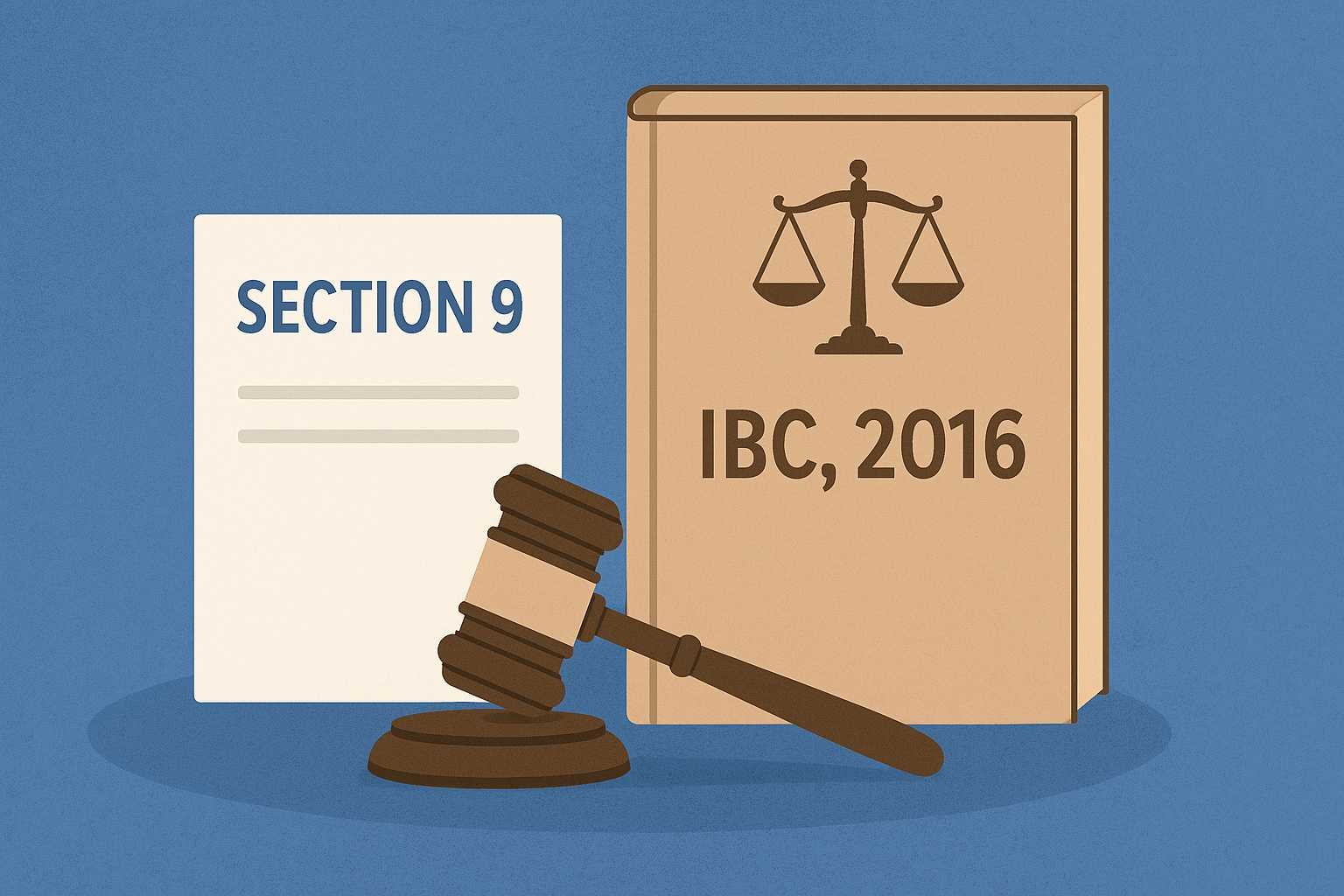On this page you will read detailed information about Telecom Regulatory Authority of India (TRAI).
As a citizen of India, you are aware of the importance of telecommunications in our daily lives. The telecom sector has witnessed tremendous growth over the past two decades, making affordable and reliable phone and internet services available across the country. This rapid development has been enabled by the Telecom Regulatory Authority of India (TRAI), an independent regulator established under the Telecom Regulatory Authority of India Act in 1997. In this 100-word article, you will learn about the objectives and major functions of TRAI in regulating the telecom and broadcasting sectors in India. Understanding the role of TRAI will give you an insight into how this quasi-judicial body strives to balance the interests of service providers and consumers in the world’s second largest telecom market.
Overview of the Telecom Regulatory Authority of India (TRAI)
The Telecom Regulatory Authority of India (TRAI) is an autonomous statutory body set up in 1997 by an Act of Parliament to regulate and promote the telecommunications sector in India. TRAI was established to provide an effective regulatory framework and adequate safeguards to ensure orderly growth of the telecom sector.
Objectives and Functions
The key objectives of TRAI are to create and nurture conditions for growth of telecommunications in India, provide a fair and transparent policy environment, facilitate competition, protect consumer interests, and achieve efficient management of scarce resources.
To fulfill these objectives, TRAI performs various functions such as fixing and revising tariffs for telecom services, ensuring compliance of terms and conditions of license, laying down standards of quality of service, formulating and amending regulations, and adjudicating disputes between service providers. TRAI also makes recommendations on license fees and other terms for telecom licenses as well as spectrum management.
Regulatory Framework
TRAI regulates telecom services including basic and cellular mobile telephone services, internet and broadband services, digital terrestrial broadcasting, and cable television services. It issues regulations and orders on various subjects such as tariff, interconnection, quality of service, broadcasting, and cable services. TRAI Act of 1997 gives TRAI the necessary authority to discharge its functions and meet stated objectives.
Transparency and Fairness
TRAI strives to achieve transparency and fairness in its functioning. It conducts open house discussions and public consultations on important issues before framing regulations and policies. TRAI invites comments from stakeholders on consultation papers and recommendations. It also publishes annual reports, audit reports, and reports of various committees and task forces. Such measures have helped in building stakeholder confidence in TRAI.
In summary, TRAI was set up to nurture the telecom sector in India by creating a transparent and fair regulatory framework. Through prudent regulations and recommendations, TRAI facilitates orderly growth of telecommunications including wireless, wireline, cable, and broadcast services across India.
History and Establishment of TRAI
The Telecom Regulatory Authority of India (TRAI) was established in 1997 through the Telecom Regulatory Authority of India Act of 1997. The main objectives behind establishing TRAI were to regulate telecom services, ensure fair competition and protect consumer interests.
Need for an Independent Regulator
Prior to 1997, the telecommunications sector in India was regulated by the Department of Telecommunications (DoT) which was under the Ministry of Communications. However, with the liberalization of the Indian economy, it became imperative to establish an independent regulatory body for the telecom sector. An independent regulator was required to boost investors’ confidence, ensure fair competition among service providers and safeguard consumer interests.
Objectives and Functions of TRAI
The key objectives and functions of TRAI are:
- Regulating telecommunication services in India including fixation/revision of tariffs for telecommunication services.
- Providing transparent policy recommendations to the Government to promote healthy growth of the telecom sector.
- Licencing and ensuring compliance with licence conditions by service providers.
- Resolving disputes between service providers or between service providers and consumers.
- Specifying the standards of quality of service to be provided by the service providers and ensuring their compliance.
- Promoting and ensuring fair competition and protecting the interest of consumers of telecommunication services.
Organizational Structure
TRAI has a Chairman, and not more than two full-time members appointed by the Government of India. It also has a secretary and advisors along with other staff. The headquarters of TRAI is in New Delhi and it has regional offices in Kolkata, Mumbai and Chennai.
TRAI Act established TRAI as an independent regulator and provided it a clear mandate along with adequate powers to regulate the telecommunications sector. Over the years, TRAI has been able to fulfill its objectives and has facilitated the rapid growth of the Indian telecom sector.
In the previous post, we had shared information about Rendition and Extradition: A Legal Analysis, so read that post also.
Objectives and Key Functions of TRAI
Regulating Telecom Services
The TRAI Act of 1997 established the Telecom Regulatory Authority of India (TRAI) to regulate telecom services, including fixation and revision of tariffs for telecom services. TRAI ensures that telecom services are accessible to all citizens at affordable prices while ensuring the financial viability of the telecom sector. TRAI also facilitates competition and promotes efficiency in the operation of telecommunication services to facilitate growth in such services.
Protecting Consumer Interests
TRAI protects the interests of consumers and ensures the quality of service (QoS) provided by service providers. It addresses consumer grievances and protects consumers from unfair practices. TRAI has the power to issue directions to service providers in this regard and can impose penalties for non-compliance.
Spectrum Management
TRAI is responsible for ensuring effective management of spectrum, an increasingly scarce resource. It determines the availability and pricing of spectrum for commercial use. TRAI provides recommendations to the Department of Telecommunications (DoT) on spectrum allocation to telecom service providers through auctions and assigns spectrum usage charges.
Promoting Competition
TRAI promotes and ensures fair competition among service providers. It regulates anti-competitive practices, abuse of dominant position and mergers & acquisitions in the telecom sector. TRAI issues recommendations on licenses, number of players, rollout obligations, etc. to facilitate fair competition.
Conducting Studies
TRAI conducts studies on various subjects relating to the telecommunications sector and provides recommendations to the Government. It also monitors and reports on the performance of the telecom sector. TRAI’s recommendations and reports aim to enable the healthy growth of the telecom sector.
In summary, TRAI has been established to ensure orderly growth of the telecom sector in India. Through transparent and judicious regulation, TRAI attempts to provide the Indian consumer with high quality telecom services at affordable prices in a competitive environment. TRAI’s key functions centre around regulating telecom services, protecting consumer interests, managing spectrum, promoting competition and conducting studies relating to the telecom sector.
Powers and Duties of TRAI
As an independent regulator, TRAI has been vested with various powers and duties to enable it to perform its functions effectively.
Regulating Telecom Services
One of TRAI’s primary duties is to regulate telecom services, fix tariffs for telecom services and ensure tariffs are transparent and non-discriminatory. TRAI issues regulations and orders on various aspects of telecom services like interconnection, quality of service, telecom infrastructure sharing, etc.
Promoting Competition
TRAI is required to promote and ensure fair competition in the telecom sector. It issues regulations to prevent anti-competitive practices by telecom operators such as predatory pricing, collusion, abuse of dominant position, etc. TRAI also examines mergers and acquisitions in the telecom sector to ensure they do not have an adverse impact on competition.
Protecting Consumer Interests
TRAI has to protect the interests of telecom consumers and ensure telecom services are provided in a fair and transparent manner. It issues regulations on various consumer-related aspects like mobile number portability, international roaming, unsolicited commercial communications, etc. TRAI also addresses consumer grievances and takes action against operators in case of violations.
Spectrum Management
TRAI provides recommendations to the Central Government on spectrum allocation and pricing. It gives recommendations on auction of spectrum, reserve price, block size, eligibility conditions, etc. The Central Government seeks TRAI’s recommendations on all spectrum related matters before finalizing its decisions.
Monitoring Performance of Service Providers
TRAI continuously monitors the performance of telecom operators and service providers. It collects quarterly performance monitoring reports from operators on various parameters like quality of service, subscriber numbers, revenue, traffic, network capacity, etc. TRAI also conducts independent drive tests and audit of operators’ networks to monitor their performance. Action is taken against operators not meeting the required standards.
To summarize, TRAI has been empowered to regulate telecom services, promote competition, protect consumer interests and manage spectrum to enable the orderly growth of the telecom sector in India. Its powers and duties facilitate achieving the objectives for which TRAI was established.
Organizational Structure of TRAI
The Telecom Regulatory Authority of India (TRAI) has a defined organizational structure to effectively carry out its functions.
Chairperson
The Chairperson heads the TRAI and is appointed by the Central Government. The Chairperson is responsible for the proper administration of the Authority and has executive powers.
Members
TRAI consists of a Chairperson and not more than two whole-time members and two part-time members. The members are also appointed by the Central Government on the recommendation of a selection committee. The members aid and advise the Chairperson in the discharge of functions of the Authority.
Secretariat
The Secretariat of the TRAI headed by the Secretary and provides secretarial assistance to the Authority. The Secretary is responsible for day-to-day administration of the Authority. The Secretariat has technical wings dealing with economic, legal, broadcasting, telecom network, and international relations. It also has non-technical wings dealing with administration, finance, and human resources.
Advisory Council
The TRAI Act provides for the constitution of a Telecom Commission to advise the Authority on issues related to telecom networks, telecom equipment and telecom services. The Commission consists of eminent persons from telecom, IT, academic and research institutions.
Regional Offices
The TRAI has regional offices in different parts of India to facilitate easy accessibility for stakeholders. The regional offices monitor the telecom scenario, study specific problems, and provide inputs to headquarters. They also undertake advocacy and awareness programs on issues relating to telecom consumers.
The organizational structure of TRAI aims to facilitate its smooth and effective functioning. The division of work and responsibilities among different organs as per their domains and expertise helps the Authority to achieve its objectives.
Key Initiatives and Policies Introduced by TRAI
The Telecom Regulatory Authority of India (TRAI) has introduced several key initiatives and policies to regulate the telecommunications sector in India.
One of TRAI’s most impactful policies was introducing Mobile Number Portability (MNP) in 2011. MNP allows mobile subscribers to retain their mobile numbers when changing from one mobile operator to another. This policy promoted competition between telecom service providers and gave consumers greater choice and flexibility.
TRAI also instituted a policy for national roaming free of extra charges in India in 2015. This allowed mobile subscribers to make calls, send SMS messages and use data services without extra roaming charges anywhere in India. This initiative made mobile services more affordable and accessible for subscribers traveling within India.
To safeguard consumer interests, TRAI established a Telecom Commercial Communications Customer Preference Regulation in 2018. This regulation curtailed the disruption of unsolicited commercial communications and ensured that customers receive only those commercial communications that they have consented to. Subscribers can now block unwanted messages and calls by registering with the National Customer Preference Register.
TRAI has taken measures to improve the quality of services provided by telecom operators. It has set network-related quality of service parameters for voice calls, SMS, data services and call center services which operators must comply with. TRAI also conducts independent audits and drives to measure the performance of operators against these benchmarks. Non-compliant operators can face penalties and other regulatory actions.
The authority has also facilitated infrastructure sharing between operators, instituted local and national number portability, reformed spectrum allocation policies and set tariffs to enable affordable telecom access for Indian citizens. Through these initiatives and policies, TRAI has successfully regulated India’s telecommunications sector and safeguarded the interests of consumers.
Impact of TRAI on the Telecom Sector in India
The Telecom Regulatory Authority of India (TRAI) was established in 1997 to regulate telecommunications services in India and protect the interests of consumers and service providers. Since its inception, TRAI has played an instrumental role in the growth and development of the Indian telecom sector.
TRAI has taken various initiatives to improve the quality of service, ensure fair competition and protect consumer interests. It has issued regulations regarding tariffs, interconnection, quality of service, etc. to facilitate fair competition in the market. TRAI’s recommendations and directives have enhanced the accessibility and affordability of telecom services across India. Its pro-consumer policies have resulted in lower tariffs and higher quality of service for subscribers.
TRAI has also contributed to the rapid growth of the telecom sector through progressive policies and light-touch regulation. Its recommendations on spectrum management, licensing, infrastructure sharing, etc. have accelerated the deployment of telecom networks in India. TRAI’s forward-looking policies and flexible regulatory approach have boosted investments in the telecom sector.
The Indian telecom sector has witnessed exponential growth since the establishment of TRAI. The teledensity has increased from below 2% to over 86% in the last two decades. The number of telephone subscribers has grown from 23 million in 1997 to over 1.2 billion currently. The lower tariffs, wider availability and greater choice of services have revolutionized how Indians communicate.
TRAI will continue to play a pivotal role in developing the telecom sector infrastructure, improving quality of service, promoting fair competition and safeguarding the interests of consumers and service providers. Its progressive regulations and proactive policies will drive the next phase of growth in the Indian telecom sector. Overall, TRAI has had a profoundly positive
Challenges and Criticisms Faced by TRAI
The Telecom Regulatory Authority of India (TRAI) faces various challenges and criticisms in carrying out its objectives and functions.
TRAI strives to create a fair, transparent and competitive telecommunications market in India. However, the interconnection usage charges set by TRAI have been disputed by telecom operators, who argue that the charges are too low, reducing their revenue and profitability. The frequent changes in regulations have also made long term planning difficult for operators.
TRAI aims to protect consumer interests and ensure high quality telecom services across India. Nonetheless, call drop issues persist in many areas, and broadband speeds remain relatively slow compared to other countries. Consumers have criticized the inadequate handling of unsolicited commercial communications as well. TRAI has attempted to address these issues by imposing financial disincentives on operators for call drops and poor service quality.
While TRAI’s objective is to enhance public welfare through spread of telecommunication, many argue that TRAI focuses excessively on maximizing competition between private operators rather than public welfare. The high spectrum usage charges and license fees in India reduce the incentives and ability of operators to expand coverage into rural and remote areas. Critics argue that lower spectrum charges and stronger mandates on rural rollout obligations could better achieve public welfare objectives.
TRAI’s objectives include efficient use of radio frequencies and ensuring growth of telecommunications. However, the delayed release of spectrum and bureaucratic allocation processes have hampered industry growth at times. Many see spectrum auctions as prioritizing short term revenue over long term industry development. Critics argue for more transparent and timely spectrum allocation to enable faster industry growth.
In summary, while TRAI has achieved progress against its objectives, various challenges around interconnection usage charges, service quality, public welfare and spectrum management remain to be addressed to fully realize its vision. Continuous evolution of regulations and balancing of competing interests are required for TRAI to overcome these challenges.
FAQs on the Telecom Regulatory Authority of India
The Telecom Regulatory Authority of India or TRAI is an independent regulator of the telecommunications sector in India. As an autonomous body, TRAI ensures orderly growth of the telecom sector, protects consumer interests and provides fair competition among service providers.
The main objectives of TRAI are:
I) Protecting consumer interests by ensuring quality of service and affordable tariffs.
II) Promoting competition in telecom services. TRAI issues licenses to new telecom providers and monitors anti-competitive practices.
III) Ensuring technical compatibility and effective interconnection between different service providers.
IV) Allocating and overseeing spectrum management. TRAI assigns spectrum to telecom operators and monitors its usage.
V) Formulating regulations and standards to enable healthy growth of the telecom sector.
The key functions performed by TRAI include:
I) Issuing new licenses to telecom providers and renewing existing licenses.
II) Fixing rates and tariffs for telecom services in consultation with operators. TRAI sets ceilings for tariffs to protect consumer interests.
III) Allocating spectrum to telecom providers through auctions and monitoring its usage.
IV) Laying down standards for quality of service to be provided by the service providers and monitoring the same.
V) Registering interconnect agreements between service providers and resolving any disputes.
VI) Adjudicating disputes between service providers regarding any matter.
VII) Proposing recommendations and regulations regarding any matter in the telecom sector.
TRAI has been instrumental in propelling the exponential growth of the Indian telecom sector. By creating a transparent and fair regulatory environment, TRAI has enabled affordable and quality telecom services to reach all parts of the country.
Conclusion
After reading this article, you now have an understanding of TRAI’s formation, objectives, and functions in regulating the telecom sector in India. The independent regulator plays a crucial role in ensuring healthy competition, consumer protection, quality of service, and adoption of new technologies. While TRAI has achieved considerable progress, challenges remain with implementing regulations evenly across all players. As technologies and consumer needs evolve, TRAI must continue balancing stakeholder interests and remain transparent, consultative and data-driven. With wise policymaking, TRAI can enable affordable quality telecom access for all Indians and sustain sector growth. Equipped with this knowledge, you can appreciate TRAI’s significance and follow its consultations to provide inputs as a stakeholder.
Disclaimer
The information and services on this website are not intended to and shall not be used as legal advice. You should consult a Legal Professional for any legal or solicited advice. While we have good faith and our own independent research to every information listed on the website and do our best to ensure that the data provided is accurate. However, we do not guarantee the information provided is accurate and make no representation or warranty of any kind, express or implied, regarding the accuracy, adequacy, validity, reliability, availability, or completeness of any information on the Site. UNDER NO CIRCUMSTANCES SHALL WE HAVE ANY LIABILITY TO YOU FOR ANY LOSS OR DAMAGE OF ANY KIND INCURRED AS A RESULT OR RELIANCE ON ANY INFORMATION PROVIDED ON THE SITE. YOUR USE OF THE SITE AND YOUR RELIANCE ON ANY INFORMATION ON THE SITE IS SOLELY AT YOUR OWN RISK. Comments on this website are the sole responsibility of their writers so the accuracy, completeness, veracity, honesty, factuality and politeness of comments are not guaranteed.
So friends, today we talked about Telecom Regulatory Authority of India (TRAI), hope you liked our post.
If you liked the information about Telecom Regulatory Authority of India (TRAI), then definitely share this article with your friends.
Knowing about laws can make you feel super smart ! If you find value in the content you may consider joining our not for profit Legal Community ! You can ask unlimited questions on WhatsApp and get answers. You can DM or send your name & number to 8208309918 on WhatsApp









